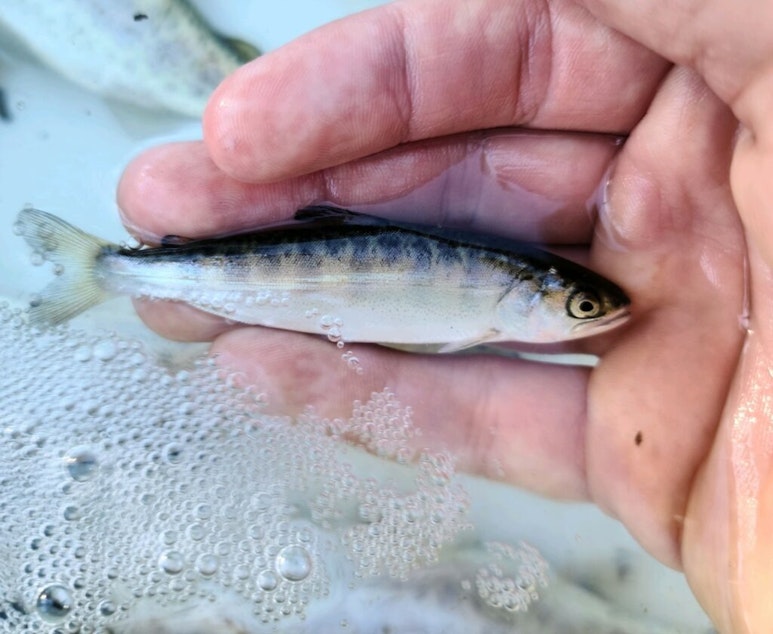Good ocean conditions could be good news for salmon, NOAA says

Fish swimming out to sea over the past year have lucked into some of the best water temperatures and food abundance along the West Coast in the last 24 years, according to an analysis from the National Oceanic and Atmospheric Administration began monitoring ocean conditions.
That could be good news for salmon and steelhead over the next few years, biologists said.
The welcoming waters in 2021 appear to be the second most favorable for fish since scientists with NOAA began monitoring ocean conditions, said Brian Burke, research fisheries biologist at NOAA Fisheries.
“It's sort of been this growing picture of, ‘Wow, things are really looking good right now across the board,’” Burke said.
The 2021 ocean conditions were bested by what Burke called a phenomenal year in 2008, after which researchers saw an increase in salmon and steelhead runs for several years.
The researchers measure a variety of signs that make up good ocean conditions, including sea surface temperature and the amount of food available to young salmon.
This past year, researchers observed a large upwelling in the winter and spring, which brought cold waters from deep in the ocean to the coastline, creating perfect growing conditions for salmon and steelhead that migrate out to sea, Burke said.
The upwelling brought many deepsea nutrients to the surface, he said. The extra food helps the salmon grow quickly. As young salmon become larger, they escape the clutches of predators such as seabirds, he said.
“The upwelling created a really productive coastal system,” Burke said.
That productivity has built slowly over several years, Burke said, after a string of hard years for ocean-dwelling fish.
A mass of warm water known as the Blob hammered the West Coast marine ecosystem, peaking in 2014 and 2015. The Blob left fewer food sources available to young salmon entering the ocean. The marine heatwave also forced more predators to eat salmon. In addition, it caused the largest algal bloom harmful to crabs and clams recorded on the West Coast.
These marine heatwaves are becoming more common, according to a news release from NOAA about a 2019 expanse of warm water similar to the Blob.
The recent cold upwelling was a welcomed relief from the heatwaves and will likely benefit juvenile salmon and steelhead that traveled to the ocean this year, Burke said.
However, nothing is guaranteed. For example, he said, predators could swoop in and take a bite out of the growing salmon. The NOAA ocean condition assessment doesn’t account for predators.
On the other hand, the beneficial ocean conditions also help a lot of anchovies, sardines and smelt, Burke said, which could give predators more fish species to snack on.
Right now, Burke said, the researchers individually evaluate each sign that points to how hospitable the ocean is to fish, when in fact, the entire system is linked.
Eventually, he said he would like to design a way to look at the ecosystem in a more connected way, similar to a flow chart. In that sort of approach, he said, researchers could pinpoint where a bottleneck might arise in the web of ocean conditions.
Moreover, Burke said he hopes an ecosystem-wide approach to monitoring ocean conditions could help fisheries beyond salmon management. For example, he said, commercial fishers in Oregon could plan business moves several years in advance.
“Commercial fishers could know about things like squid distribution ahead of time or even estimate squid distribution based on things like marine waves,” Burke said. [Copyright 2022 Northwest News Network]
